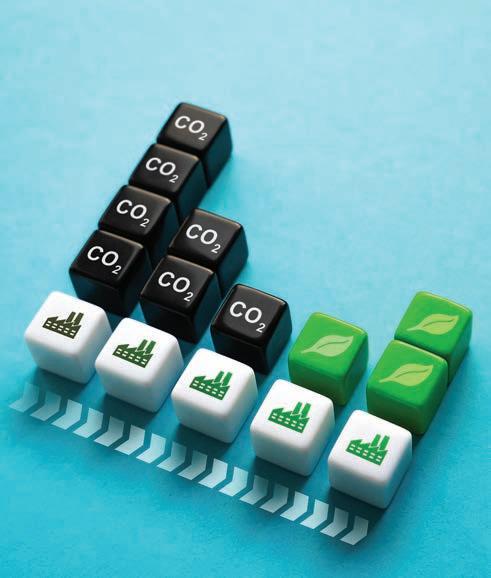
3 minute read
CLEANTECH Q&A FEATURE
Manufacturers need help just to get started down the path. When they get started and see benefits, they will continue looking for further opportunities. I think it’s especially true when they see the intangible benefits they didn’t expect, like greater employee engagement and retention, and stronger reputation among customers.
QWhat do Canadian companies have to do to become more carbon neutral? Do you feel complete carbon neutrality is an achievable goal?
Dussin: Companies can do many things to reduce their carbon footprint, and they can also become part of the clean tech supply chain to help reduce carbon emissions outside of their companies. However, reducing carbon footprints is different from achieving carbon neutrality.
Carbon neutrality is achievable, but not simply through minor incremental improvements and piecemeal reductions in emissions. It will require much more significant changes.
Companies will need to look at their processes from beginning to end and re-think them completely to achieve carbon neutrality. From the materials we use, where we source them, how we handle and process them, how we sell and transport them, and how we handle waste and scrap. We can improve individual steps in the process to reduce our footprint. Still, to achieve neutrality, we’ll have to look at the entire process, including all the linkages with our supply chain and customers.
It’s an ambitious goal and one worth pursuing. Companies, especially small and mid-size companies, cannot do it independently. It will require coordination within supply chains and jurisdictions.
QHow can governments help put Canada on the right road to a cleaner future and help support manufacturing in the adoption of clean technology?
Dussin: Governments need to continue, and to increase, funding alongside companies to invest in clean technology projects. Companies won’t incur the costs alone, especially in the current economic climate. Governments need to start funding process improvement initiatives, instead of just investments in equipment or technology. There is a lot of low-hanging fruit in optimizing manufacturing processes to reduce waste, which is a missed opportunity.
Just as important, governments need to help de-risk these investments, and it’s not just about the cost. Companies need trustworthy, objective advice and data on which technologies and process improvements will work for them. They need help connecting with other manufacturers or the expertise they need to make these investment decisions.
Governments should also help manufacturers tap into export opportunities in the clean technology sector. Many small and mid-sized manufacturers are part of the clean technology supply chain that aren’t actively involved in exporting their technology and projects. Governments can connect these companies with potential markets outside of Canada and impact reducing emissions globally, not just at home.
If we aim to achieve true carbon neutrality, governments will also have to make enormous investments in the economy’s systems and infrastructure. For example, if we all electr ified our production processes and transportation completely, it’s unlikely we’ll have enough “clean” electricity. This is particularly true outside of Ontario and Quebec, which have significant nuclear and hydro. Governments will have to invest in significantly more clean electricity production and foster the development of emerging new industries like hydrogen, new battery technologies, and small modular nuclear reactors, to name a few.
QDo you have a case study or example of successful clean technology implementation?
Dussin: Over the last few years, we have built a series of large heat exchangers for an Ontario clean technology company, who have sold their system to a major oil sands operator. Our customer, Combustion & Energy Systems, designs condensing economizers that recover energy and water from industrial exhaust gases. The end-user has made the investment, along with some government f unding, and is seeing significant benefits in terms of both saved energy and water.
The project has helped them reduce their energy use and carbon emissions while at the same time reducing waste and saving money. By investing in this system, they’ve proven the benefits at a large scale, such that other companies can now make similar investments at much lower risk. The data they’ve generated by operating the systems can de-risk the investment for other potential end-users.
Further, our customer, and by extension, we at Alps Welding, have always been exporters, primarily to the U.S. In proving this system’s effectiveness, we can look together for opportunities outside of Canada where it could benefit and generate savings and emissions reduction.
We frequently see this kind of opportunity, where we work with Canadian technology companies to build systems that improve efficiency and environmental performance. We see that there’s an opportunity to scale up these collaborations both in Canada and in the export market, if we can work together with end users and governments to eliminate some of the barriers standing in our way.









